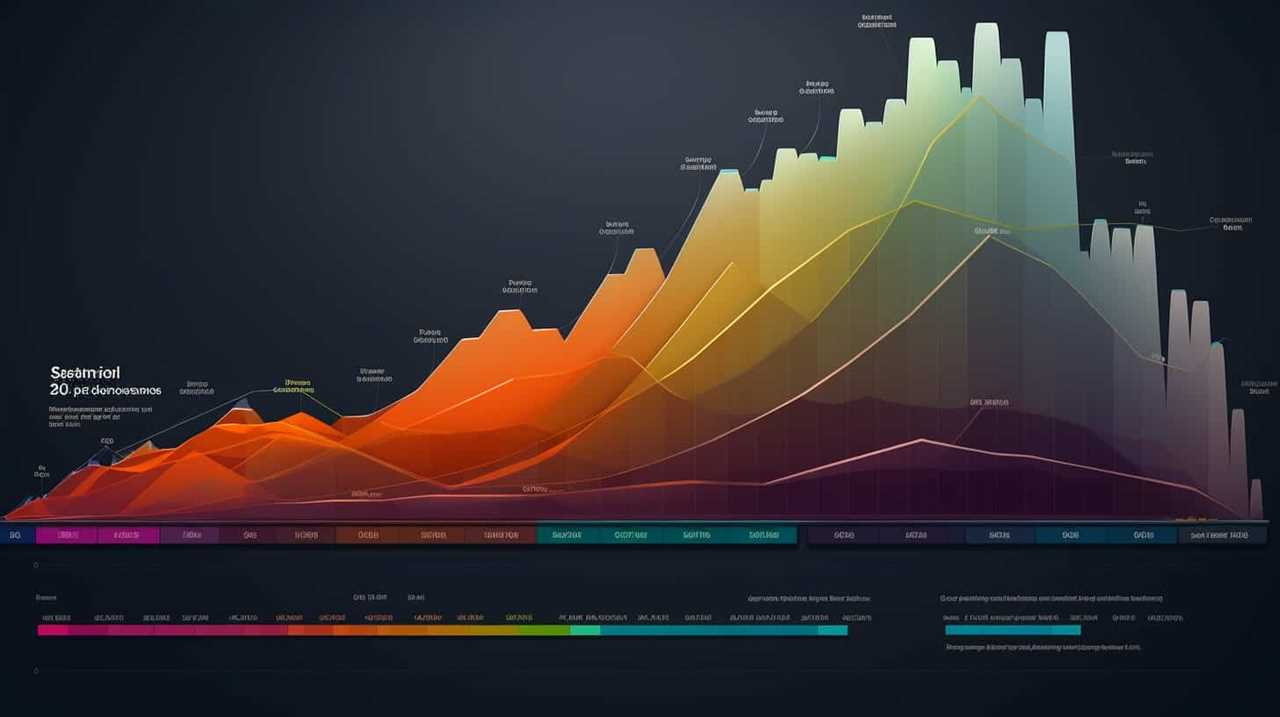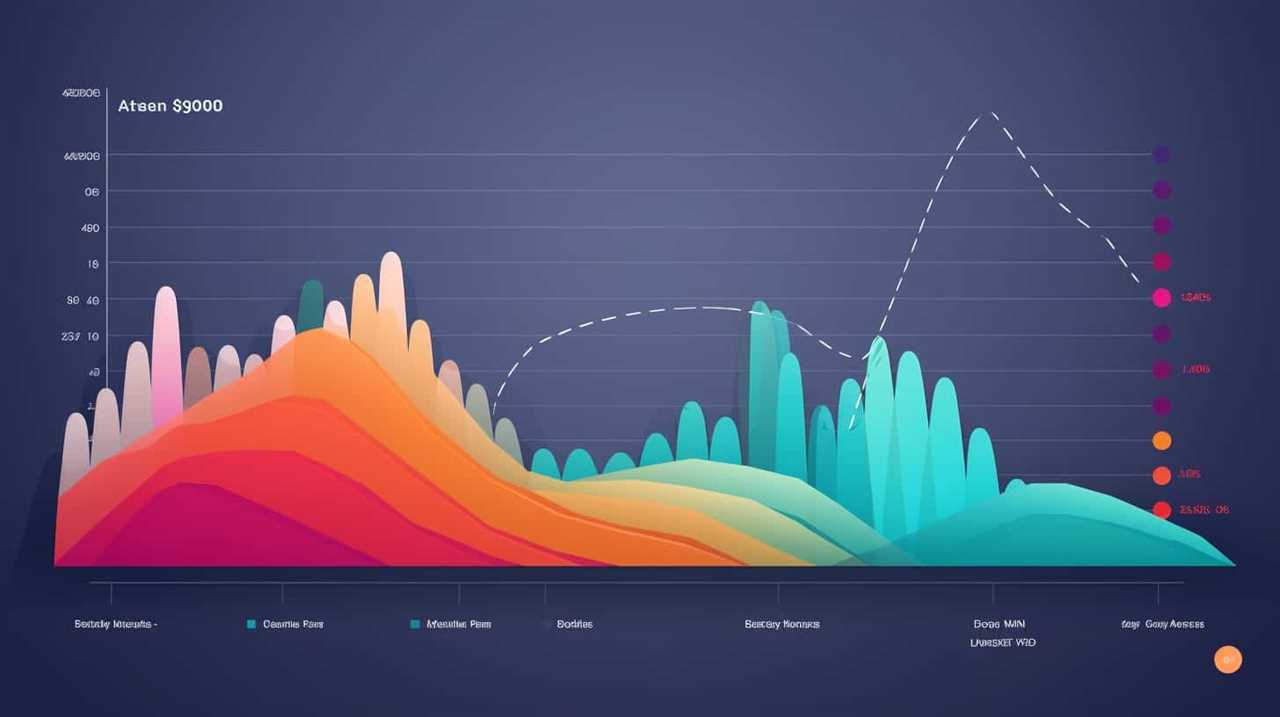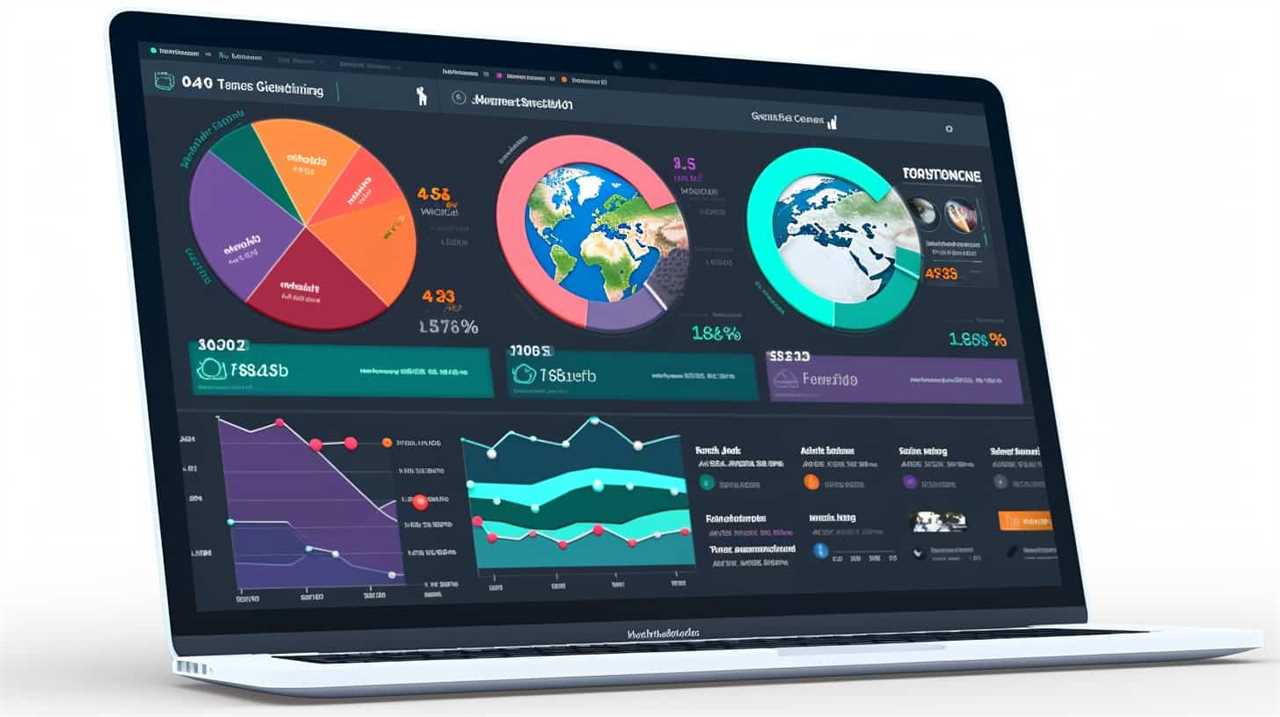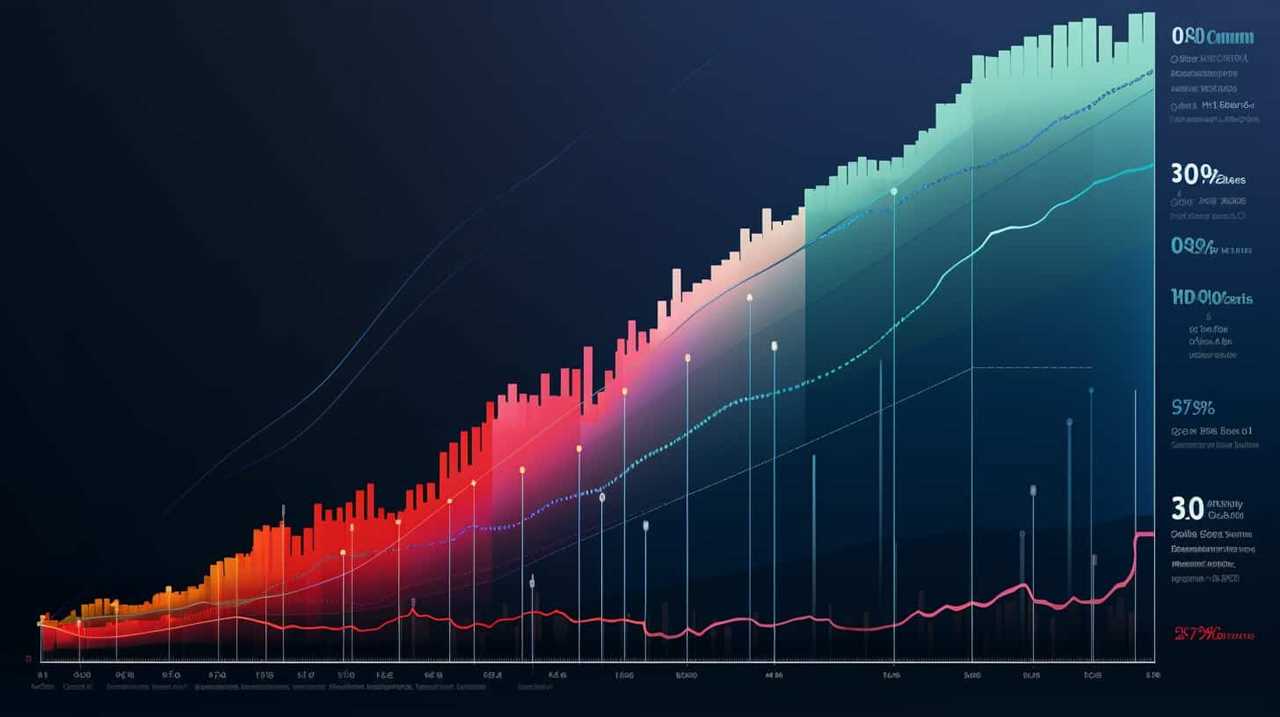We all know about the abbreviations SEM and SEO, but does it mean they’re the same thing? This article will delve into the world of search engine marketing (SEM) and search engine optimization (SEO) to underline their similarities and differences.
With a focus on concise, technical language, we’ll explore the importance of keywords, paid advertising, and organic optimization in both SEM and SEO strategies.
By integrating these two approaches, we can leverage the power of SEM and SEO for online success.
Key Takeaways
- SEM and SEO are two different strategies used to improve website visibility and search rankings.
- SEM involves paid advertising on search engine results pages, while SEO focuses on optimizing website content and structure for organic search rankings.
- SEM provides immediate results and targets specific keywords and demographics, while SEO takes time to yield results and improves visibility for a broader range of keywords.
- Integrating SEM and SEO can lead to increased online visibility, attract more organic traffic, improve brand visibility, achieve a higher ROI, and create a sustainable online presence.
Definition of SEM and SEO
SEM and SEO, or search engine marketing and search engine optimization, are two distinct but closely related strategies used to improve a website’s visibility and increase its organic search rankings.

SEM involves using paid advertising to promote a website on search engine results pages (SERPs), while SEO focuses on optimizing a website’s content and structure to rank higher in organic search results.
The definition of SEM is the practice of using paid methods, such as pay-per-click (PPC) advertising, to increase a website’s visibility on SERPs. This includes targeting specific keywords and bidding on ad placements to drive targeted traffic to a website.
On the other hand, SEO refers to the process of optimizing a website’s content, meta tags, and backlinks to improve its visibility and organic search rankings.
Keywords play a crucial role in both SEM and SEO. In SEM, selecting the right keywords is essential for creating effective PPC campaigns. These keywords should be relevant to the website’s products or services and have high search volume.

In SEO, keywords help search engines understand the content and relevance of a webpage, making it easier for them to rank it in search results.
Understanding the definition of SEM and SEO and the importance of keywords in both strategies is crucial for successfully improving a website’s visibility and organic search rankings. By incorporating relevant keywords and implementing effective SEM and SEO techniques, website owners can increase their online visibility and attract more targeted traffic.
Purpose of SEM and SEO
The purpose of SEM and SEO may seem similar at first, but they serve different functions in online marketing.
SEM, or search engine marketing, involves paid advertising to increase visibility and drive traffic to a website.

On the other hand, SEO, or search engine optimization, focuses on optimizing a website to improve organic search rankings and increase organic traffic.
While both strategies aim to increase visibility and drive traffic, the benefits of SEM include immediate results and targeting specific keywords, while SEO provides long-term organic visibility and higher credibility.
Differentiating SEM and SEO
To understand the differences between SEM and SEO, we need to examine their distinct purposes and how they contribute to online marketing strategies. SEM, or Search Engine Marketing, is a paid advertising approach that aims to increase website visibility and drive traffic through search engine results pages (SERPs). SEO, or Search Engine Optimization, on the other hand, focuses on optimizing website content and structure to improve organic search rankings.
To further clarify the contrasting goals of SEM and SEO, let’s take a closer look at their impact on website ranking:

| SEM (Paid Advertising) | SEO (Organic Optimization) |
|---|---|
| Immediate results | Long-term results |
| Requires ongoing investment | Minimal ongoing costs |
| Ad placement on top of SERPs | Organic listing in SERPs |
| Higher visibility for targeted keywords | Improved visibility for a broader range of keywords |
| Limited control over search engine rankings | Full control over website optimization |
Understanding these differences is crucial in determining which strategy or combination of strategies is most suitable for achieving your specific marketing goals. With this knowledge, we can now delve into the benefits of SEM and how it can boost your online presence even further.
Benefits of SEM
Now, let’s delve into the benefits of SEM and how it can further boost our online presence. SEM, or Search Engine Marketing, plays a crucial role in digital marketing strategies. It offers numerous benefits that can help businesses reach their target audience effectively.
Here are five key benefits of SEM:
- Increased visibility: SEM allows businesses to appear prominently in search engine results pages, increasing their visibility and brand awareness.
- Targeted advertising: SEM enables businesses to target specific keywords and demographics, ensuring their ads reach the right audience at the right time.
- Immediate results: Unlike SEO, which takes time to yield results, SEM can generate immediate traffic and conversions.
- Measurable ROI: SEM provides detailed analytics and tracking, allowing businesses to measure the return on investment of their advertising campaigns.
- Cost-effective: With SEM, businesses only pay when someone clicks their ads, making it a cost-effective marketing strategy.
Key Differences Between SEM and SEO
When discussing the key differences between SEM and SEO, we frequently encounter contrasting strategies and techniques.

While both SEM (Search Engine Marketing) and SEO (Search Engine Optimization) aim to improve a website’s visibility on search engine result pages, they do so in distinct ways.
SEO focuses on optimizing a website’s content, structure, and HTML code to improve organic search rankings.
On the other hand, SEM uses paid advertising to increase a website’s visibility on search engines. Unlike SEO, SEM allows businesses to target specific keywords and demographics, ensuring their ads reach the right audience.
While SEM can provide immediate results, SEO offers long-term benefits, as it builds organic traffic over time.

Importance of Keywords in SEM and SEO
As we delve into the importance of keywords in SEM and SEO, it’s crucial to understand how these key elements support the distinct strategies and techniques employed in search engine marketing and search engine optimization.
- Long tail keywords: Long tail keywords are specific phrases that target niche audiences, driving higher quality traffic to your website.
- Relevance: Choosing the right keywords ensures that your content aligns with user intent, increasing the chances of better organic rankings.
- Conversion rate optimization: By optimizing landing pages with relevant keywords, you can increase the chances of converting website visitors into customers.
- Targeting: Keywords allow you to target specific demographics, locations, and interests, ensuring that your content reaches the right audience.
- Search engine algorithms: Search engines rely heavily on keywords to understand the content of a webpage, making keyword optimization essential for better visibility.
Understanding the importance of keywords in both SEM and SEO sets the foundation for effective digital marketing strategies.
Now, let’s explore the role of paid advertising in SEM.
Role of Paid Advertising in SEM
To continue the discussion on the role of paid advertising in SEM, let’s explore how it complements the strategies and techniques employed in search engine marketing and search engine optimization. Paid advertising plays a crucial role in SEM by enhancing the visibility and reach of a website or brand. One popular form of paid advertising is display advertising, which involves placing visual ads on websites or social media platforms. These ads can be highly targeted, allowing businesses to reach their desired audience effectively. To measure success in paid advertising, key metrics such as click-through rates (CTRs), conversion rates, and return on investment (ROI) are utilized. By analyzing these metrics, businesses can determine the effectiveness of their paid advertising campaigns and make data-driven decisions to optimize their SEM strategies.

| Key Metrics | Definition |
|---|---|
| Click-through rates (CTRs) | The percentage of users who click on an ad after seeing it |
| Conversion rates | The percentage of users who complete a desired action, such as making a purchase or filling out a form |
| Return on investment (ROI) | The ratio of the net profit generated by an ad campaign to the cost of the campaign |
Paid advertising, particularly display advertising, plays a crucial role in complementing the strategies and techniques employed in SEM. By measuring key metrics such as click-through rates (CTRs), conversion rates, and return on investment (ROI), businesses can determine the success of their paid advertising campaigns and make data-driven decisions to optimize their SEM strategies.
Role of Organic Optimization in SEO
Moving on to the role of organic optimization in SEO, we continue to enhance the visibility and reach of a website or brand by strategically optimizing its content and structure.
Here are some key aspects of the role of organic optimization in SEO:
- Content Creation: Creating high-quality, relevant, and engaging content plays a crucial role in SEO. By incorporating relevant keywords and providing valuable information to users, we can improve search engine rankings and attract organic traffic.
- Backlink Impact: Backlinks are an important factor in organic optimization. High-quality backlinks from authoritative websites can boost a website’s credibility and improve its search engine rankings.
- On-Page Optimization: Optimizing various on-page elements such as meta tags, headers, and internal linking structure helps search engines understand the content and relevance of a website.
- Technical SEO: Optimizing website speed, mobile-friendliness, and site architecture ensures a smooth user experience and improves search engine rankings.
- Keyword Research: Conducting thorough keyword research helps identify relevant keywords and phrases to target in content creation and optimization efforts.
By understanding and implementing these organic optimization strategies, we can improve a website’s visibility and organic search rankings.

Transitioning into the next section, let’s now explore the benefits of integrating SEM and SEO strategies.
Benefits of Integrating SEM and SEO Strategies
Integrating SEM and SEO strategies offers several benefits for businesses.
By combining these two approaches, businesses can increase their online visibility, ensuring that their website appears in both paid and organic search results.
Additionally, integrating SEM and SEO allows for targeted keyword optimization, ensuring that businesses are reaching their intended audience and driving relevant traffic to their website.

Increased Online Visibility
By combining SEM and SEO strategies, we can achieve increased online visibility. This integration of strategies allows businesses to maximize their online presence and reach a larger audience.
Here are five benefits of integrating SEM and SEO for increased online visibility:
- Enhanced search engine rankings: By optimizing your website using SEO techniques and running targeted SEM campaigns, you can improve your search engine rankings and appear higher in search results.
- Increased website traffic: With a strong SEM and SEO strategy, you can attract more organic traffic to your website, resulting in a higher number of potential customers.
- Improved brand visibility: Integrating SEM and SEO helps increase brand visibility across different online platforms, making your business more recognizable to your target audience.
- Better ROI: The combination of SEM and SEO allows you to achieve a higher return on investment by targeting specific keywords and demographics, resulting in more qualified leads.
- Long-term sustainability: By implementing effective digital marketing strategies, you can create a sustainable online presence that continues to generate visibility and traffic for your business in the long run.
Targeted Keyword Optimization
To maximize the benefits of integrating SEM and SEO strategies, businesses can leverage targeted keyword optimization for improved online visibility. By conducting thorough targeted keyword research, companies can identify the most relevant and high-performing keywords to incorporate into their website content. These targeted keywords should be strategically placed in key areas such as meta tags, headings, and body text. Additionally, optimizing landing pages with these keywords can further enhance the chances of ranking higher in search engine results. By aligning SEM and SEO efforts through targeted keyword optimization, businesses can increase their online visibility and attract more qualified organic traffic to their website.
| Key Areas | Meta Tags | Headings |
|---|---|---|
| Importance | Descriptive | Hierarchy |
| Purpose | Improve CTR | Organize |
| Optimization | Relevant | Formatting |
| Key Areas | Body Text | Landing Pages |
|---|---|---|
| Importance | Readability | Conversion |
| Purpose | Informative | User-friendly |
| Optimization | Keywords | Call-to-action |
Best Practices for Implementing SEM and SEO Together
When combining SEM and SEO, we found that implementing best practices together yields optimal results. Here are some best practices to consider:

- Conduct thorough keyword research to identify relevant and high-performing keywords for both SEM and SEO campaigns.
- Optimize website content by incorporating targeted keywords, meta tags, and headers to improve organic search rankings.
- Create compelling and relevant ad copy for SEM campaigns, focusing on strong call-to-actions and keyword inclusion.
- Regularly monitor and analyze campaign performance using tools like Google Analytics to identify areas for improvement.
- Continuously test and refine both SEM and SEO strategies to stay updated with evolving search engine algorithms and user behavior.
Implementing SEM and SEO together can be challenging, but by following these best practices, you can maximize the effectiveness of your digital marketing efforts and drive more targeted traffic to your website.
Conclusion: Leveraging SEM and SEO for Online Success
Leveraging SEM and SEO together can significantly enhance online success. Integrating SEM and SEO strategies allows businesses to maximize their visibility and reach in the digital landscape. By combining the power of search engine marketing (SEM) and search engine optimization (SEO), companies can effectively target their audience, increase website traffic, and improve conversion rates.
SEM enables businesses to drive immediate traffic to their websites through paid search advertising. It provides instant visibility on search engine results pages, making it a valuable tool for increasing brand awareness and attracting qualified leads.
On the other hand, SEO focuses on optimizing website content and structure to improve organic search rankings. It involves keyword research, on-page optimization, link building, and technical SEO to boost website visibility and attract organic traffic.

When SEM and SEO are integrated, businesses can achieve even greater results. By aligning their SEM and SEO strategies, companies can ensure that their paid and organic efforts work together to maximize their online presence. This synergy allows for a comprehensive approach to digital marketing, resulting in increased website traffic, higher conversion rates, and ultimately, online success.
Frequently Asked Questions
Do SEM and SEO Strategies Have Different Goals?
When considering the goals of SEM and SEO strategies, it’s important to note that they do have different objectives.
SEM, or search engine marketing, aims to increase website traffic through paid advertising.
SEO, or search engine optimization, focuses on improving organic search rankings.

Both strategies have an impact on website traffic, but SEM provides more immediate results through ads, while SEO takes a longer-term approach by optimizing website content and structure for better visibility in search engine results.
Are Keywords Equally Important in Both SEM and Seo?
Keywords play a vital role in both SEM and SEO strategies. They’re necessary for both, but their importance may vary.
Businesses can optimize their use of keywords by conducting thorough keyword research and analysis to identify relevant and high-performing keywords.
In SEM, keywords are crucial for targeting the right audience and driving relevant traffic through paid ads.

In SEO, keywords help optimize content and improve organic search rankings.
Therefore, businesses must prioritize keyword optimization in both SEM and SEO strategies to achieve maximum visibility and success.
Can SEM and SEO Be Effective if Used Separately?
When considering the effectiveness of separate SEM and SEO strategies, it’s important to understand the impact of using them separately.
SEM focuses on paid advertising to generate immediate results, while SEO emphasizes organic search optimization for long-term visibility.

While both strategies can be effective individually, using them together can yield enhanced results.
What Are Some Common Challenges When Integrating SEM and SEO Strategies?
When integrating SEM and SEO strategies, there are several challenges that we may encounter. These include aligning keyword targeting, coordinating messaging, and ensuring a consistent user experience.
However, the benefits of combining SEM and SEO efforts are significant. By leveraging the strengths of both strategies, we can increase visibility, drive targeted traffic, and improve overall search engine performance.
To successfully integrate SEM and SEO, it’s important to follow best practices such as conducting keyword research, optimizing website content, and monitoring performance metrics.

How Can Businesses Measure the Success of Their SEM and SEO Efforts?
When it comes to measuring the success of our SEM and SEO efforts, tracking conversions and measuring ROI are crucial.
By analyzing the data from our SEM campaigns, we can determine the number of conversions and calculate the return on investment.
Similarly, in SEO, we can monitor the organic traffic and conversions generated from our website.
These metrics help us gauge the effectiveness of both SEM and SEO strategies, allowing us to make data-driven decisions to optimize our online marketing efforts.

Conclusion
In conclusion, integrating SEM and SEO strategies is crucial for online success. By combining paid advertising and organic optimization techniques, businesses can maximize their online visibility and reach their target audience more effectively.
According to a recent study, websites that implement both SEM and SEO techniques experience a 200% increase in website traffic and a 150% increase in conversions. Therefore, it’s vital for companies to leverage SEM and SEO together to achieve optimal results in the competitive online landscape.









